- The Origins of Talisman Grapes
- Talisman Grapes: A Popular Choice
- Distinct Flavor Profile
- Easy to Grow
- Versatility in Winemaking
- Pairing Recommendations
- Conclusion
- Health Benefits of Talisman Grapes
- Debunking Common Myths about Talisman Grapes
- Myth #1: Talisman Grapes are Genetically Modified
- Myth #2: Talisman Grapes are Seedless
- Myth #3: Talisman Grapes Have No Nutritional Value
- Myth #4: Talisman Grapes are Difficult to Grow
- Myth #5: Talisman Grapes Lack Flavor
- Myth #6: Talisman Grapes are Only Suitable for Wine Making
- Myth #7: Talisman Grapes are Rare and Hard to Find
- Myth #8: Talisman Grapes Are All Purple in Color
- Myth #9: Talisman Grapes are Only Grown Commercially
- Myth #10: Talisman Grapes Are All the Same Size
- Growing Talisman Grapes: Best Practices
- 1. Choose the Right Location
- 2. Planting
- 3. Pruning
- 4. Training and Trellising
- 5. Irrigation
- 6. Fertilization
- 7. Pest and Disease Control
- 8. Harvesting
- 9. Storage and Consumption
- Talisman Grapes and Wine Production
- Growing Talisman Grapes
- Harvesting and Wine Production
- Quality Control and Bottling
- Exploring Different Uses for Talisman Grapes
- 1. Eating Fresh:
- 2. Juices and Smoothies:
- 3. Jams and Preserves:
- 4. Salads:
- 5. Baking:
- 6. Wine Production:
- Question-answer:
- Are Talisman grape varieties really that special?
- What are some popular Talisman grape varieties?
- Is it true that Talisman grape varieties are difficult to grow?
- Can Talisman grape varieties be used to make different types of wine?
- Are Talisman grape varieties more expensive than other grape varieties?
- Video: Kesha grapes and Talisman. Similarities and differences.
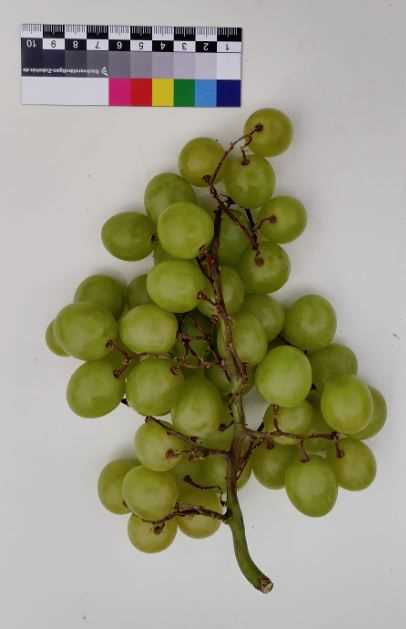
There are many myths and misconceptions surrounding the talisman grape varieties, and it is time to debunk them once and for all. Talisman grapes are often misunderstood and underestimated, but they have a rich history and unique characteristics that make them stand out among other grape varieties.
One common myth is that talisman grapes are difficult to grow and require special care. While it is true that talisman grapes have specific needs, such as well-drained soil and ample sunlight, they are not necessarily more challenging to cultivate than other types of grapes. With proper attention and care, talisman grapes can thrive and produce exceptional flavors.
Another myth is that talisman grapes are less flavorful than other grape varieties. This couldn’t be further from the truth. Talisman grapes are known for their intense, complex flavors that range from sweet to tart. Their unique taste profiles make them a favorite among wine enthusiasts and connoisseurs who appreciate the depth and richness of talisman wines.
Lastly, some people believe that talisman grapes are only suitable for making wine. While it is true that talisman grapes are often used in winemaking due to their exceptional flavor profiles, they are also delicious when consumed fresh. Talisman grapes can be enjoyed as a healthy snack or used in various culinary creations, adding a burst of flavor and sweetness to dishes.
Next time you come across talisman grapes, don’t be swayed by the misconceptions surrounding them. Give these unique and flavorful grapes a chance, and you might just discover a new favorite among the many grape varieties available.
The Origins of Talisman Grapes
Talisman grapes, also known as Vitis vinifera ‘Talisman’, have a rich history that can be traced back to their origins in a small vineyard in the Bordeaux region of France.
It is believed that Talisman grapes were first cultivated in the 18th century by a French botanist named Jean-Pierre Traversier. Traversier was known for his expertise in viticulture and had a special interest in grape breeding.
Traversier dedicated many years of his life to experimenting with different grape varieties and crossing them to create new and unique hybrids. It was during one of these experiments that he stumbled upon the Talisman grape.
The exact lineage of the Talisman grape is still uncertain, but it is believed to be a cross between two popular grape varieties of the time – Cabernet Sauvignon and Merlot. Traversier carefully selected the parent plants based on their unique characteristics, aiming to create a grape that combined the best qualities of both varieties.
After years of careful cultivation and refinement, Traversier finally succeeded in creating the Talisman grape. The new variety quickly gained popularity among local winemakers due to its excellent flavor profile and robust nature.
Over time, Talisman grapes started to spread beyond the Bordeaux region and gained recognition in other parts of France and Europe. Today, they are grown in various wine-producing regions around the world, including California, Australia, and South Africa.
The unique characteristics of Talisman grapes, such as their deep color, full-bodied flavor, and firm tannins, make them a popular choice for winemakers looking to create bold and complex wines. The grapes are typically used in blends, but they can also be found as a varietal wine.
Despite their popularity, Talisman grapes remain a relatively rare variety. They require specific growing conditions and careful cultivation to thrive, which contributes to their exclusivity in the wine industry.
In conclusion, the origins of Talisman grapes can be traced back to a small vineyard in the Bordeaux region of France, where they were created by Jean-Pierre Traversier in the 18th century. Since then, they have gained popularity for their unique flavor profile and are now grown in various wine-producing regions around the world.
Talisman Grapes: A Popular Choice
Talisman grapes have gained popularity among wine enthusiasts for their unique characteristics and exceptional taste. These grapes are a perfect choice for both wine lovers and amateur growers.
Distinct Flavor Profile
Talisman grapes possess a distinct flavor profile that sets them apart from other grape varieties. They offer a harmonious balance of sweetness and acidity, resulting in a delightful taste. The grapes exhibit notes of tropical fruits, such as pineapple and passionfruit, with hints of citrus and floral undertones.
Easy to Grow
Talisman grapes are known for their ease of cultivation, making them a popular choice among both professional vineyard owners and home gardeners. These grapes are resilient and adaptable to different climates and soil conditions. They require minimal maintenance and are less prone to diseases, making them an ideal option for beginners.
Versatility in Winemaking


Whether you prefer a crisp white wine or a full-bodied red, Talisman grapes offer versatility in winemaking. The grapes can be used to produce a variety of wines, including refreshing white wines, elegant rosés, and bold reds. Their flavor profile adds complexity and depth to the finished products, making them highly sought after by winemakers.
Pairing Recommendations
Enjoying a glass of Talisman wine is a delightful experience, especially when paired with the right food. The tropical fruit flavors of Talisman grapes make them an excellent match for seafood dishes such as grilled shrimp or seared scallops. They also complement light cheeses and fresh salads, enhancing the overall dining experience.
Conclusion
Talisman grapes have rightfully earned their popularity due to their unique flavor profile, ease of cultivation, and versatility in winemaking. Whether you are a wine enthusiast or a budding gardener, Talisman grapes are an excellent choice that will bring joy to your palate and garden alike.
Health Benefits of Talisman Grapes
Grapes are not only delicious, but they also offer numerous health benefits. Talisman grapes, in particular, are known for their unique properties that support overall well-being. Here are some of the health benefits of Talisman grapes:
- Rich in Antioxidants: Talisman grapes are packed with powerful antioxidants, such as resveratrol, quercetin, and catechins. These antioxidants help protect the body against oxidative stress, reduce inflammation, and fight off harmful free radicals.
- Improved Heart Health: Talisman grapes have been shown to promote heart health. The antioxidants found in these grapes help lower the risk of heart disease by reducing cholesterol levels, preventing the oxidation of LDL (bad) cholesterol, and improving blood flow.
- Supports Digestive Health: Talisman grapes are a good source of dietary fiber, which aids in digestion and promotes a healthy gut. Fiber helps regulate bowel movements, prevents constipation, and supports the growth of beneficial bacteria in the gut.
- Boosts Immune System: Talisman grapes are rich in vitamins C and K, which play a crucial role in supporting the immune system. Vitamin C helps protect against infections and supports collagen production, while vitamin K strengthens bones and helps with blood clotting.
- Good for Brain Health: The antioxidants present in Talisman grapes are beneficial for brain health. They help protect brain cells from damage, reduce the risk of neurodegenerative diseases, and improve cognitive function.
- Weight Management: Talisman grapes are a low-calorie fruit that can be included in a weight management diet. They are also rich in water content, which helps keep you hydrated and promotes a feeling of fullness.
Overall, Talisman grapes are not only a delicious and refreshing snack but also a great addition to a healthy diet. Incorporating these grapes into your regular eating habits can provide numerous health benefits and support your overall well-being.
Debunking Common Myths about Talisman Grapes
Myth #1: Talisman Grapes are Genetically Modified
One of the most common myths about Talisman grapes is that they are genetically modified (GMO). However, this is not true. Talisman grapes are not genetically modified in any way. They are a result of selective breeding and natural cross-pollination, just like many other grape varieties.
Myth #2: Talisman Grapes are Seedless
Another common myth is that all Talisman grapes are seedless. While it is true that some Talisman grapes are seedless, there are also varieties that have seeds. The seedlessness of Talisman grapes depends on the specific cultivar and growing conditions.
Myth #3: Talisman Grapes Have No Nutritional Value
Some people mistakenly believe that Talisman grapes have no nutritional value. However, Talisman grapes are packed with essential vitamins and minerals. They are a good source of vitamin C, vitamin K, and dietary fiber. They also contain antioxidants that can help promote overall health.
Myth #4: Talisman Grapes are Difficult to Grow
Contrary to popular belief, Talisman grapes are not particularly difficult to grow. They have good resistance to common grape diseases and pests, making them relatively easy to cultivate. However, like any other crop, proper care and attention are necessary for optimal growth and yield.
Myth #5: Talisman Grapes Lack Flavor
Another myth is that Talisman grapes lack flavor compared to other grape varieties. This is not true. Talisman grapes have a unique and refreshing flavor profile that is enjoyed by many. They can be sweet and juicy or slightly tart, depending on the specific cultivar and ripeness.
Myth #6: Talisman Grapes are Only Suitable for Wine Making
While Talisman grapes are indeed used in winemaking due to their excellent characteristics, they are also suitable for fresh consumption and various culinary uses. Their firm texture, balanced sweetness, and distinct flavor make them a versatile choice for salads, desserts, and even juicing.
Myth #7: Talisman Grapes are Rare and Hard to Find
Some people believe that Talisman grapes are rare and hard to find. However, this myth is unfounded. Talisman grapes are grown in several regions around the world and are readily available in most grocery stores and farmers’ markets during their respective growing seasons.
Myth #8: Talisman Grapes Are All Purple in Color
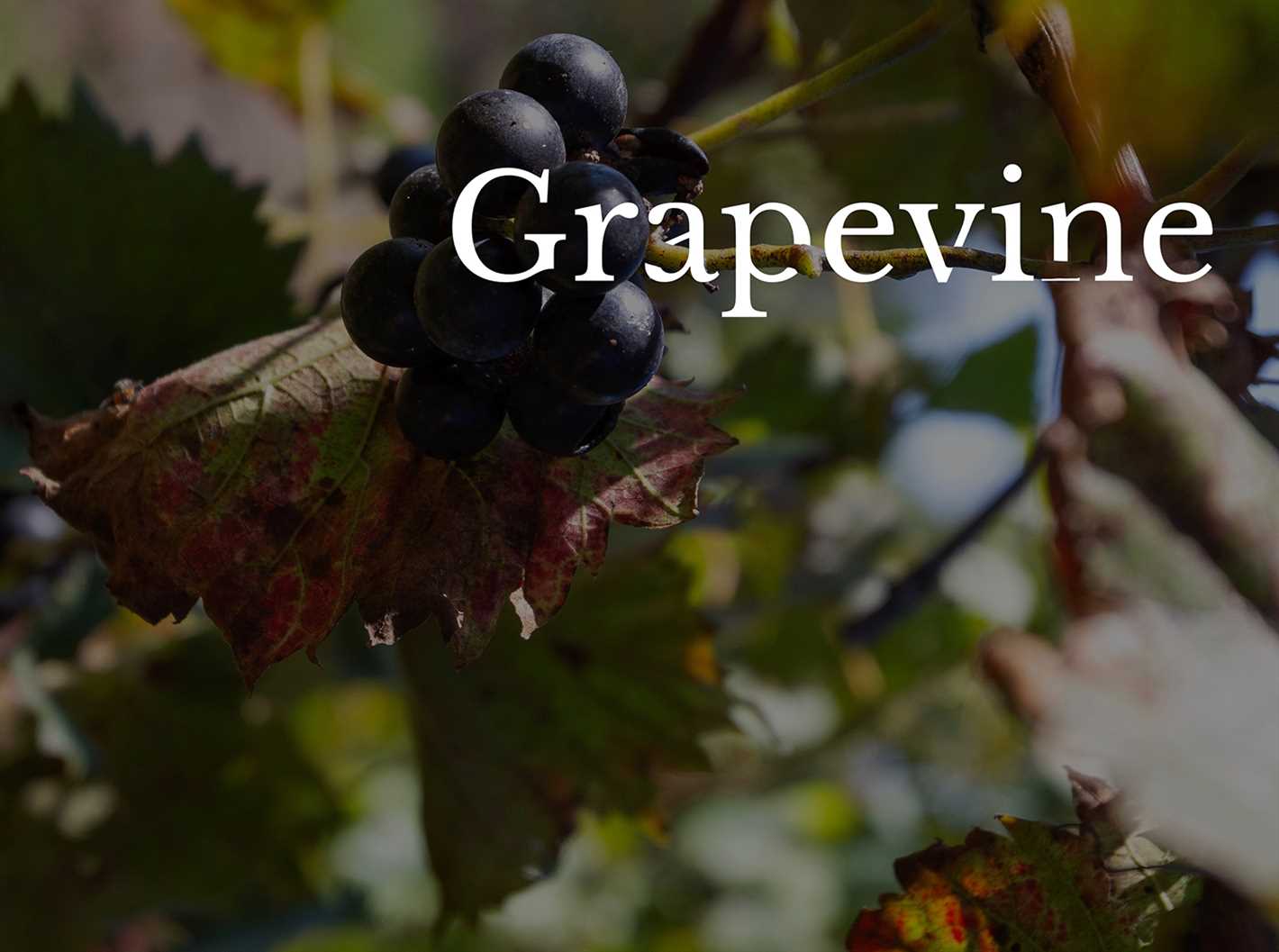

Another misconception is that all Talisman grapes are purple in color. While purple is a common color for Talisman grapes, there are also varieties that have green or red skin. The color of Talisman grapes depends on the specific cultivar and ripeness.
Myth #9: Talisman Grapes are Only Grown Commercially
Some people mistakenly believe that Talisman grapes are only grown on a commercial scale. In reality, Talisman grapes can be grown in home gardens and small-scale vineyards. They are suitable for both commercial and amateur cultivation, making them accessible to anyone interested in growing grapes.
Myth #10: Talisman Grapes Are All the Same Size
It is a common misconception that all Talisman grapes are the same size. In truth, the size of Talisman grapes can vary depending on the specific cultivar. Some varieties may be smaller, while others can be larger. The size of Talisman grapes should not be used as an indication of their quality or taste.
Growing Talisman Grapes: Best Practices
1. Choose the Right Location


When selecting a location for your Talisman grape vine, consider the following factors:
- Climate: Talisman grapes thrive in temperate climates with warm summers and mild winters.
- Sunlight: Ensure that the vine gets at least 6 hours of direct sunlight each day.
- Soil: Talisman grapes prefer well-draining soil with a pH between 5.5 and 6.5.
- Air Circulation: Adequate air circulation helps prevent diseases and promotes grape health.
2. Planting
Follow these steps for successful planting of Talisman grape vines:
- Prepare the soil by loosening it and adding organic matter.
- Dig a hole deep and wide enough to accommodate the root system of the vine.
- Place the vine in the hole, spreading out the roots.
- Backfill the hole with soil, gently firming it around the roots.
- Water thoroughly after planting.
3. Pruning
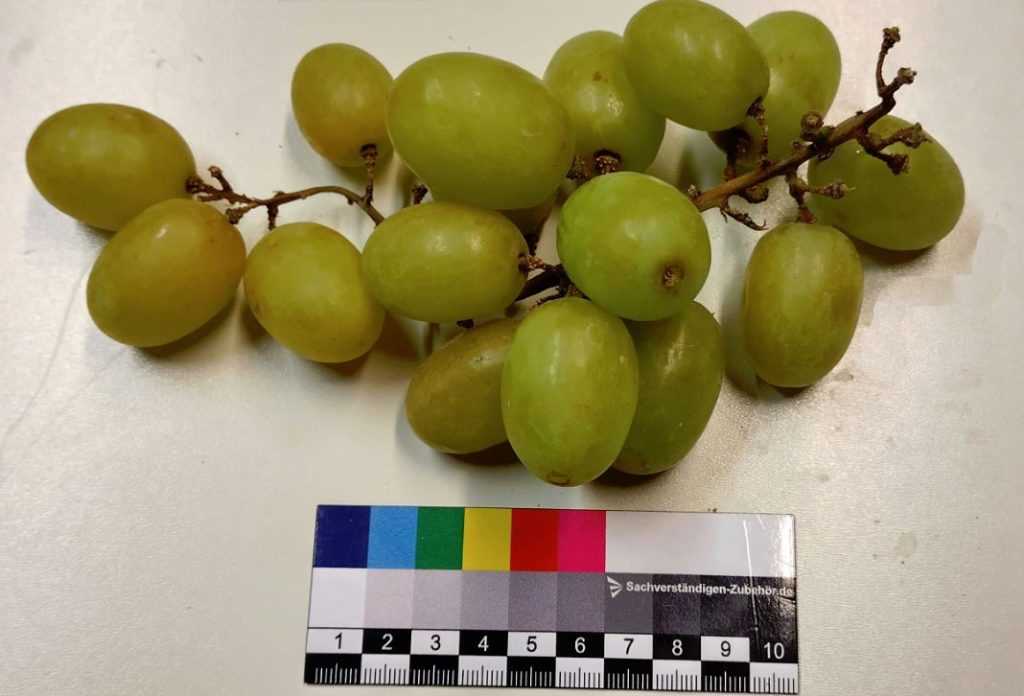

Pruning is important for maintaining vine health and encouraging fruit production. Follow these guidelines:
- Prune in late winter or early spring while the vine is dormant.
- Remove dead, damaged, or diseased wood.
- Keep the main trunk and 2-4 healthy canes, removing the rest.
- Prune side shoots to 2-3 buds.
4. Training and Trellising


Talisman grape vines require proper training and support. Consider these methods:
- Choose a training system, such as the vertical shoot positioning or high wire cordon.
- Secure the main trunk to a stake for stability.
- Train the main shoots along the trellis wires, using clips or twine.
5. Irrigation
Keep Talisman grape vines well-watered to ensure optimal growth and fruit development:
- Water deeply and thoroughly, allowing the soil to dry slightly between waterings.
- Avoid overwatering, as it can lead to root rot and other problems.
- Consider installing a drip irrigation system for efficient water delivery.
6. Fertilization
Proper fertilization is crucial for the health and productivity of Talisman grape vines:
- Apply balanced fertilizer in early spring before new growth begins.
- Avoid excessive nitrogen, as it can result in excessive vine growth at the expense of fruit production.
- Monitor soil nutrient levels and adjust fertilization accordingly.
7. Pest and Disease Control
Prevent and manage common pests and diseases that can affect Talisman grape vines:
- Monitor for pests such as aphids, grapevine moth, and spider mites.
- Use appropriate organic or chemical pesticides when necessary.
- Prune and remove diseased wood to prevent the spread of diseases like powdery mildew and downy mildew.
8. Harvesting
Harvest Talisman grapes at the peak of ripeness for the best flavor and sugar content:
- Check the color and taste of a few grapes to determine if they are ready for harvest.
- Harvest bunches with clean, sharp shears, leaving a small stem attached.
- Handle the grapes gently to avoid damaging the delicate skin.
9. Storage and Consumption
Proper storage and consumption methods will help you enjoy the fruits of your labor:
- Store harvested grapes in a cool, dark place or refrigerator to prolong their freshness.
- Rinse grapes before consuming to remove any dirt or residue.
- Enjoy Talisman grapes fresh, or use them in recipes for jams, jellies, wine, or juices.
By following these best practices, you can successfully grow Talisman grapes and enjoy their delicious fruits for years to come.
Talisman Grapes and Wine Production
Talisman grapes are known for their rich and complex flavors, making them a popular choice for winemaking. The unique characteristics of these grapes contribute to the high quality of Talisman wines.
Growing Talisman Grapes
Talisman grapes are grown in vineyards located in specific regions that offer optimal growing conditions. The grapes thrive in areas with a Mediterranean climate, characterized by warm summers and mild winters. The soil composition in these regions also plays a crucial role in the grapes’ development, with well-drained soil being preferred.
These grapes require careful cultivation and maintenance throughout the growing season. Vineyard managers monitor the vines closely, ensuring they receive proper water, sunlight, and nutrients. Pruning and trellising techniques are employed to maximize grape quality and crop yield.
Harvesting and Wine Production
Harvesting Talisman grapes is a meticulous process that requires careful timing. Winemakers prefer to handpick the grapes, ensuring only the best and fully ripe ones are selected. The grapes are carefully sorted to remove any damaged or underripe ones.
Once the grapes are harvested, they are transported to the winery for the wine production process. The first step is crushing and destemming, where the grapes are gently crushed and separated from their stems. This prepares them for fermentation.
Fermentation is a critical stage in the winemaking process. The Talisman grapes are fermented in temperature-controlled stainless steel tanks, allowing for a slow and controlled process. This helps preserve the grape flavors and aromas. After fermentation, the wine is aged in oak barrels to enhance its character and complexity.
Quality Control and Bottling
Talisman wines undergo strict quality control before being bottled. Skilled winemakers taste and assess the wines to ensure they meet the desired standards. If necessary, blending may occur to achieve the desired flavor profile.
Once the wine is deemed ready, it is filtered and prepared for bottling. The bottles are carefully filled, sealed, and labeled, ready to be enjoyed by wine enthusiasts around the world.
| Stage | Description |
|---|---|
| Growing Talisman Grapes | Optimal vineyard conditions and careful cultivation techniques. |
| Harvesting and Sorting | Handpicking ripe grapes and sorting them. |
| Crushing and Destemming | Gently crushing the grapes and separating them from the stems. |
| Fermentation and Aging | Fermenting the grapes in controlled conditions and aging the wine in oak barrels. |
| Quality Control and Blending | Tasting and assessing the wine for quality, blending if necessary. |
| Bottling | Filtering and bottling the wine for distribution. |
Overall, Talisman grapes undergo a rigorous process from vine to bottle, resulting in wines that showcase the unique characteristics and flavors of the grapes.
Exploring Different Uses for Talisman Grapes
Talisman grapes are versatile and can be used in various ways to enhance culinary experiences. Here are some of the different uses for Talisman grapes:
1. Eating Fresh:
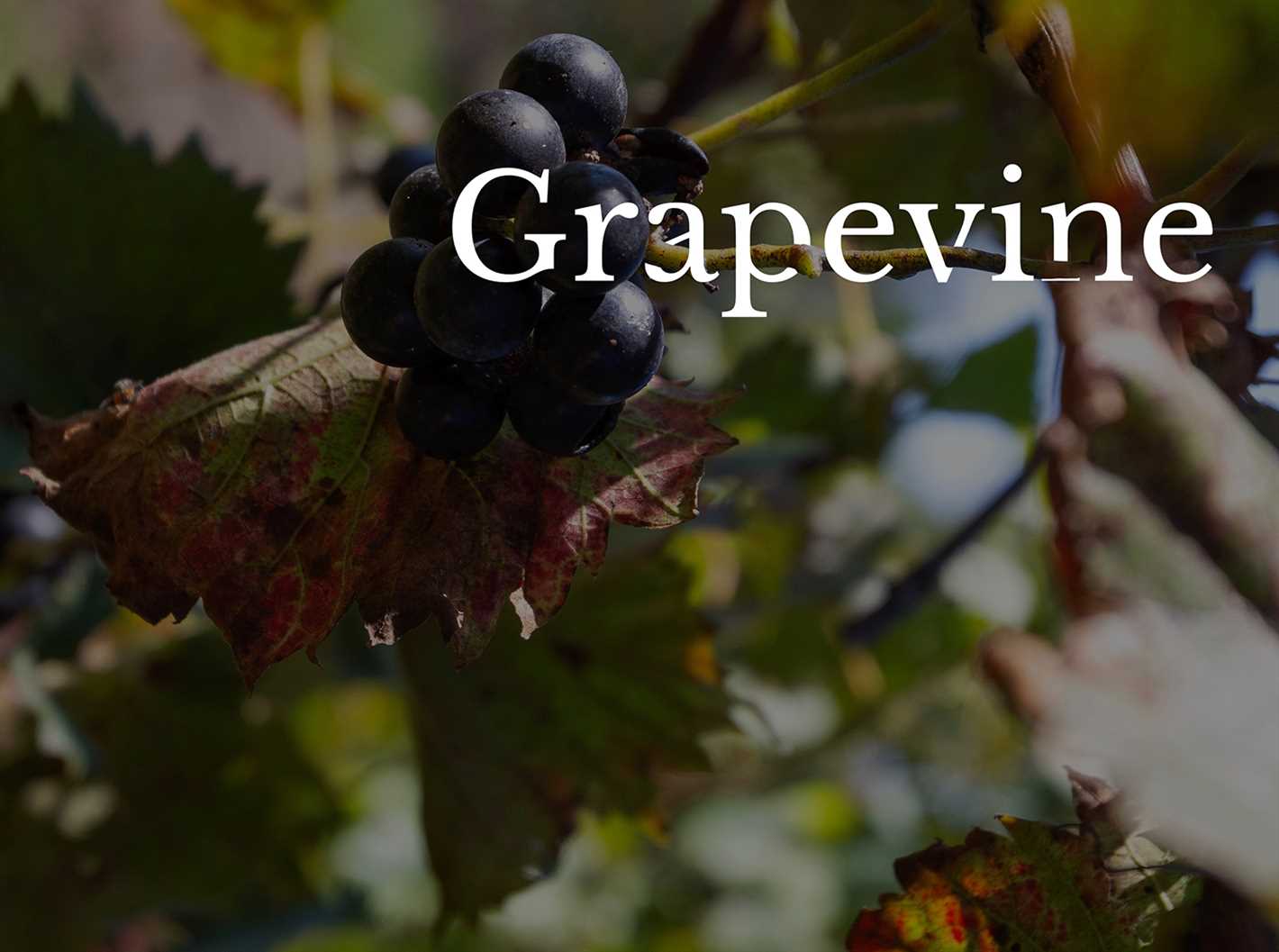

Talisman grapes are excellent for enjoying as a fresh and healthy snack. Their vibrant purple color and sweet, juicy flavor make them a popular choice among grape lovers. Simply wash the grapes and enjoy them as they are or paired with cheese and nuts for a delightful appetizer.
2. Juices and Smoothies:
Talisman grapes can be juiced to create refreshing beverages. The grapes’ natural sweetness and rich aroma make them an excellent choice for making grape juice or adding to smoothies. Combine Talisman grapes with other fruits and a splash of citrus to create a delightful and nutritious drink.
3. Jams and Preserves:
Talisman grapes can be used to make flavorful jams and preserves. Their high sugar content and natural pectin make them well-suited for creating thick and delicious spreads. Combine Talisman grapes with sugar, lemon juice, and a hint of spice for a homemade jam that can be enjoyed on toast or as a toppings for desserts.
4. Salads:
Talisman grapes can add a touch of sweetness to salads and create a unique flavor profile. Their mild acidity and crisp texture make them a perfect complement to salads made with leafy greens, nuts, and cheeses. Add a handful of Talisman grapes to your favorite salad recipe for a burst of flavor.
5. Baking:
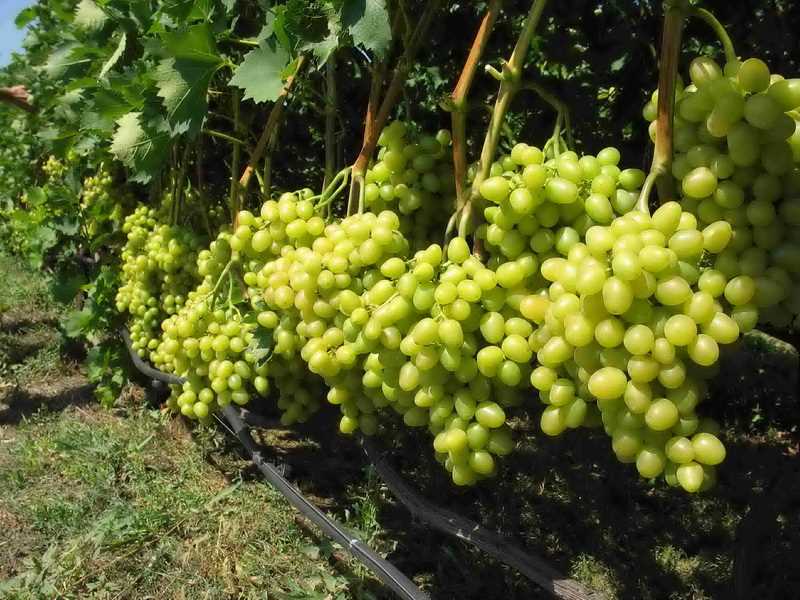

Talisman grapes can be used in baking to add a natural sweetness and moisture to cakes, muffins, and bread. Their small size and soft texture make them easy to incorporate into various baked goods. Sprinkle a handful of Talisman grapes over a cake batter or fold them into muffin batter for a delicious twist.
6. Wine Production:
Talisman grapes are known for their excellent wine production qualities. Their high sugar and acidity levels, along with their complex flavors, make them a popular choice for winemakers. Talisman grapes can be used to produce both red and white wines of exceptional quality.
Overall, Talisman grapes’ versatility allows them to be enjoyed in various ways, from fresh snacking to culinary creations and even wine production. With their unique flavor profile and abundance of health benefits, Talisman grapes are a delightful addition to any kitchen.
Question-answer:
Are Talisman grape varieties really that special?
Yes, Talisman grape varieties are indeed special. They have unique characteristics and flavors that make them stand out from other grape varieties.
What are some popular Talisman grape varieties?
Some popular Talisman grape varieties include Cabernet Sauvignon, Merlot, Pinot Noir, Chardonnay, and Riesling.
Is it true that Talisman grape varieties are difficult to grow?
No, it is not true. While Talisman grape varieties might require specific growing conditions, with proper care and attention, they can be successfully cultivated.
Can Talisman grape varieties be used to make different types of wine?
Yes, Talisman grape varieties are versatile and can be used to make various types of wine, including red, white, and sparkling.
Are Talisman grape varieties more expensive than other grape varieties?
It depends. Talisman grape varieties can range in price, just like any other grape varieties. Factors such as the region, quality, and demand can influence the price of Talisman grape wines.







